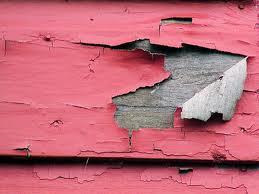
If you’re concerned about lead in your home and its possible effects on your children’s health, you may be tempted to try a home lead testing kit.
Unlike asbestos testing kits – which are really just a way of pre-paying for testing in a laboratory – lead testing kits claim to let you test for lead right in your home. They do this with a chemical-coated swab that’s supposed to react to the presence of lead. Some kits use rhodizonate, which turns red or pink; others use sulfide, which turns brown or black.
This makes the tests sounds straightforward and easy to interpret, like a litmus test for acidity or a home pregnancy test. But there are several problems with lead testing kits.
False negatives and other problems
Most importantly, the results are unreliable. In 2007, the US Consumer Product Safety Commission (CPSC) tested several commonly available lead testing kits. They found that more than half the results were false negatives: that is, they didn’t change colour to indicate lead when there was indeed lead present. This is an astonishing level of inaccuracy!
There are other problems too: the kits won’t detect lead if it’s coated with other products, and the presence of other substances can confuse the results. Respected US magazine Consumer Reports found in their own study that using the kits correctly took practice, which just adds another level of doubt to the process:
All lead test kits require practice. Exposing the layers of old paint took strength, dexterity, and lots of practice….Correctly “reading” color changes when lead levels were low also took practice.
Even a positive result can’t be trusted: the CPSC study found false positives as well as false negatives among the results. In other words, whether you get a negative or a positive result, you’ll need to get it confirmed by professional testing. So what’s the point of home testing kits – why not go straight to the professionals? The CPSC agrees:
False results can make it difficult or impossible for consumers to determine the proper course of action to take….Testing by a qualified laboratory and trained personnel is the only way to accurately assess the potential risk posed by a consumer product that may contain lead.
Lead poses too much of a risk to your family to rely on DIY detection. Instead, get a sample tested in a professional laboratory, so you get a definite answer the first time. Find out how to collect a sample and deliver it to Airsafe for testing.



